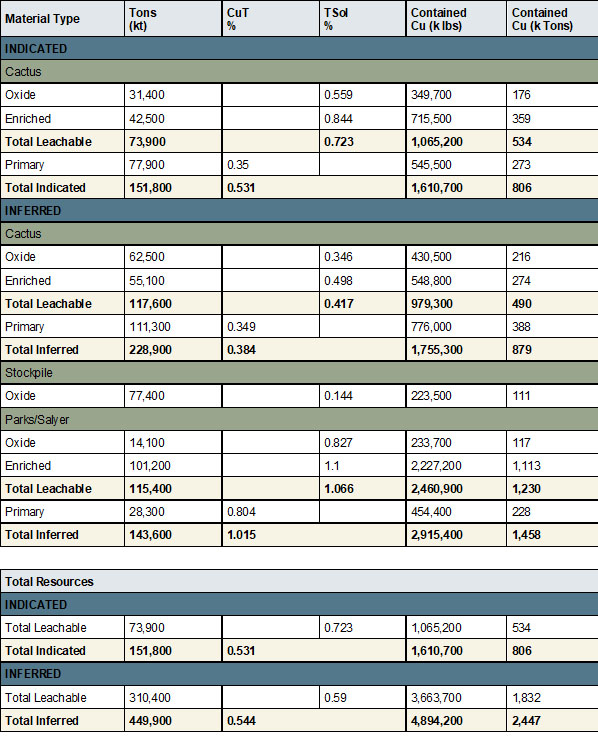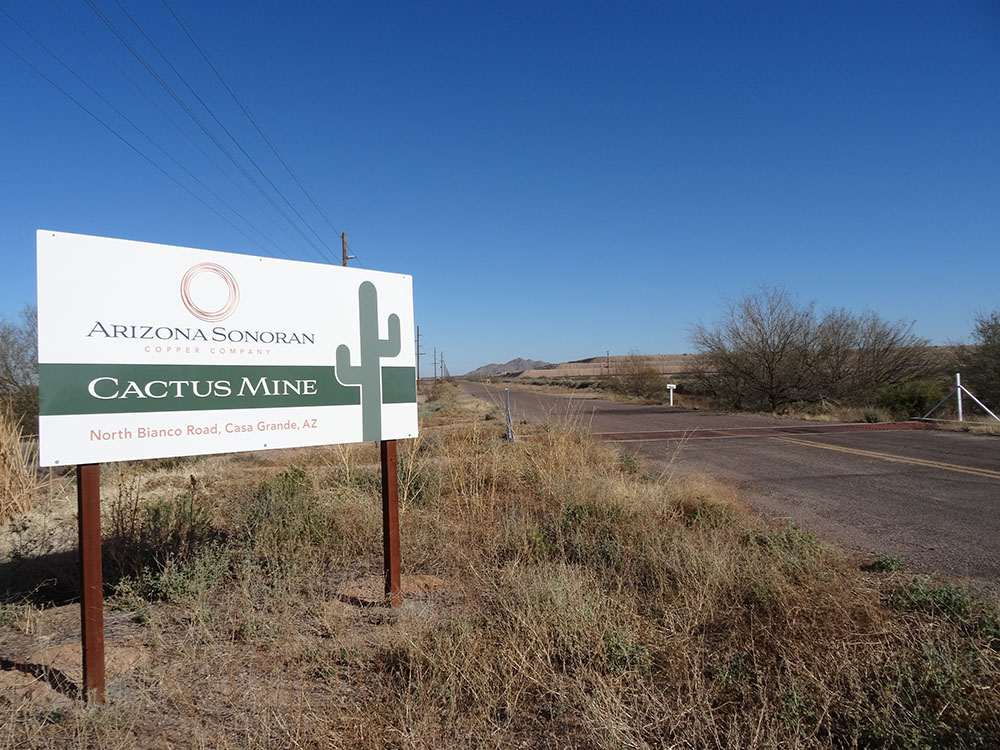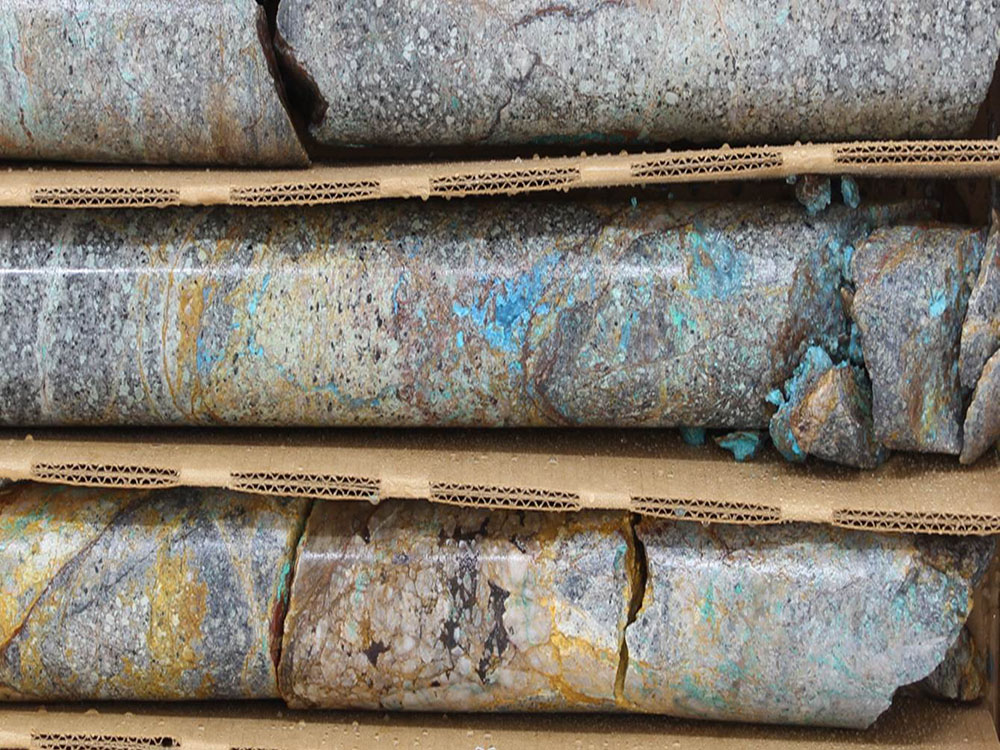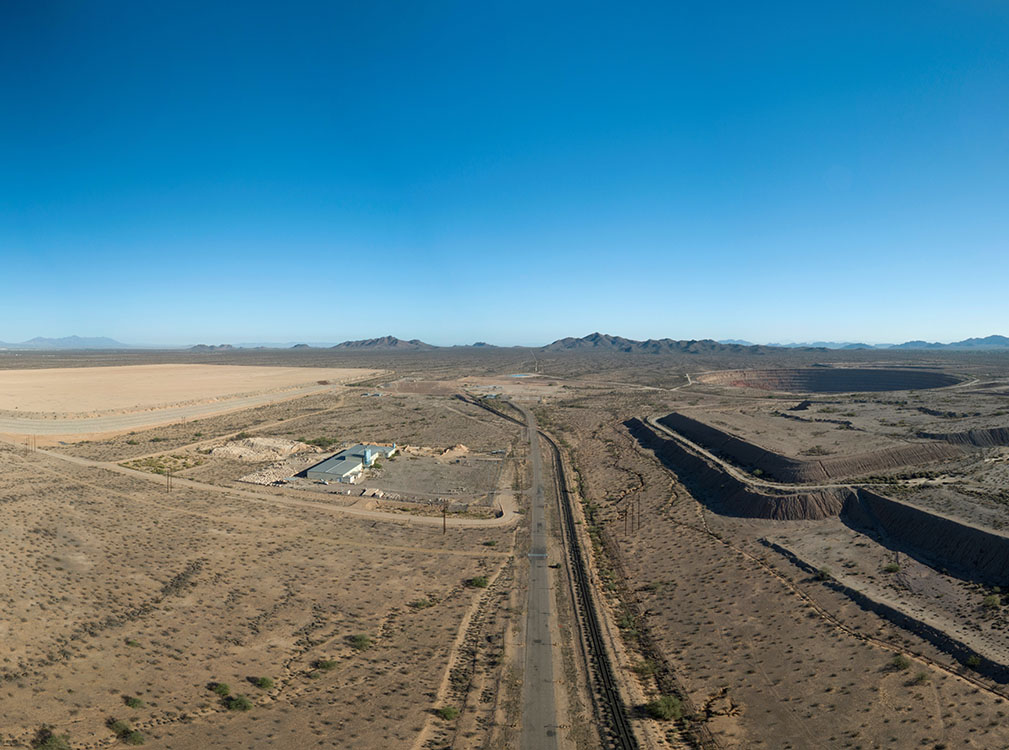About Arizona Sonoran Copper Company
Arizona Sonoran Copper Company (ASCU:TSX) is focused on developing its brownfield copper project on private land in Arizona, a tier 1 location. The Cactus Mine Project is located less than an hour’s drive from the Phoenix International airport via highway i-10, and with grid power and the Union Pacific Rail line situated at the base of the Cactus Project main road. With permitted water access, a streamlined permitting framework and infrastructure already in place, ASCU’s Cactus Mine Project is a lower risk copper development project in the infrastructure-rich heartland of Arizona.
The Project consists of three deposits, the Cactus East and West Deposits and the Parks/Salyer Deposit. Together, the Project represents the third largest independent copper development project in the USA with 1.6B lbs of Cu indicated and 4.9B lbs of Cu inferred. ASCU is currently completing detailed engineering (pre-feasibility study expected in Q1 24 and a feasibility study in H2 24).
ASCU Highlights
-
-
-
-
-
- Low-risk development (water rights, an abundance of water and access to infrastructure both onsite and nearby, with well-advanced permitting)
- Past producing asset with a scalable development in tier 1 jurisdiction (Cactus, Parks/Salyer and Primary Sulphide Optionality with Nuton)
- Robust economics and production profile – proposed Copper heap leach and SXEW operation on oxides and enriched material
- Well-known and experienced executive team:
-
-
-
-
The Company’s principal asset is situated on private land in an infrastructure-rich area of Arizona. The 5,368 acres of 100% owned land is just north of the W Maricopa-Casa Grande Highway and 4 miles west of the city of Casa Grande. The privately held land is host to a porphyry copper trend, extending 4 km, from Parks/Salyer in the SW and to the Cactus Northeast Extension in the NE, and the Cactus deposit in the centre. The Project is located 40 miles (64 km) southeast of the Phoenix, Arizona metropolitan area, off interstate highway 10, on private land in Pinal County. Pinal County, a growing industrial county, is in the heart of Arizona’s copper mining district and at the intersection of Arizona’s three major copper porphyry belts.
Social and Core Values
The Company, including its executives, employees and contractors, ensure each decision is made based on Our Core Values and Good Governance practices in support of the project, the community and the environment.
Infrastructure
ASCU benefits from open pit access to near surface remnant ore, water wells and a water pond, access roads, rail spur, main power line and substation, administration buildings and the TruStone building currently being used for metallurgical column leach of the Cactus and Parks/Salyer material. The prior core shack has been modernized and extended with power and AC. Onsite infrastructure from the prior ASARCO operation includes historic data and maps, core shack, vent raise, underground development towards Cactus East ore body, production shaft to 1,800 ft (549 m) level.
Geology
The project extends over a portion of the larger Santa Cruz porphyry copper system that has been dismembered and displaced by tertiary extensional faulting. Major host rocks at Cactus are Precambrian Oracle Granite and Laramide Monzonite Porphyry and Quartz Monzonite Porphyry. The porphyries intruded the older rocks to form mixed breccias; monolithic breccias and occur as large masses, poorly defined dike-like masses; and thin well-defined but discontinuous dikes. The mineralization is structurally complex with intense fracturing, faulting, and both pre-mineral and post-mineral brecciation. As such, it is expected the metallurgy of both Cactus and P/S will be similar however testing is ongoing.
Global Mineral Resources

Notes:
- CuT means total copper and Tsol means total soluble copper as the addition of sequential acid soluble and sequential cyanide soluble copper assays. Tons are reported as short tons.
- Cactus and Stockpile Resource estimates have an effective date of 31st August, 2021 and use a copper price of US$3.15/lb. The assumptions in respect of the Cactus and Stockpile Resource estimates are as stated in the Preliminary Economic Assessment (“PEA”) titled “Arizona Sonoran Copper Company, Inc. Cactus Project, Arizona, USA Preliminary Economic Assessment” with an effective date of filed in August 31, 2021; Parks/Salyer Resource estimate has an effective date of 26th September, 2022 and uses a copper price of US$3.75/lb
- Technical and economic parameters defining resource pit shell: mining cost US$2.45/t; G&A US$0.55/t, and 44°-46° pit slope angle.
- Technical and economic parameters defining underground resource: mining cost US$28.93/t, and G&A representing 7% of direct costs.
- Technical and economic parameters defining processing: Heap leach (HL) processing cost including selling US$1.77/t; HL recovery 83% of CuT; mill processing cost US$8.50/t.
- For Cactus: Variable cutoff grades were reported depending on material type, potential mining method, and potential processing method. Oxide material within resource pit shell = 0.096% TSol; enriched material within resource pit shell = 0.098% TSol; primary material within resource pit shell = 0.205% CuT; oxide underground material outside resource pit shell = 0.56% TSol; enriched underground material outside resource pit shell = 0.70% TSol; primary underground material outside resource pit shell = 0.70% CuT.
- For Parks/Salyer: Variable cutoff grades were reported depending on material type associated potential processing method. Oxide underground material = 0.495% TSol; enriched underground material = 0.60% TSol; primary underground material = 0.586% CuT.
- Mineral resources, which are not mineral reserves, do not have demonstrated economic viability. The estimate of mineral resources may be materially affected by environmental, permitting, legal, title, sociopolitical, marketing, or other relevant factors.
- The quantity and grade of reported inferred mineral resources in this estimation are uncertain in nature and there is insufficient exploration to define these inferred mineral resources as an indicated or measured mineral resource; it is uncertain if further exploration will result in upgrading them to an indicated or measured classification.
- Total may not add up due to rounding.


